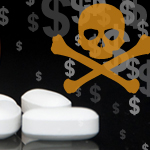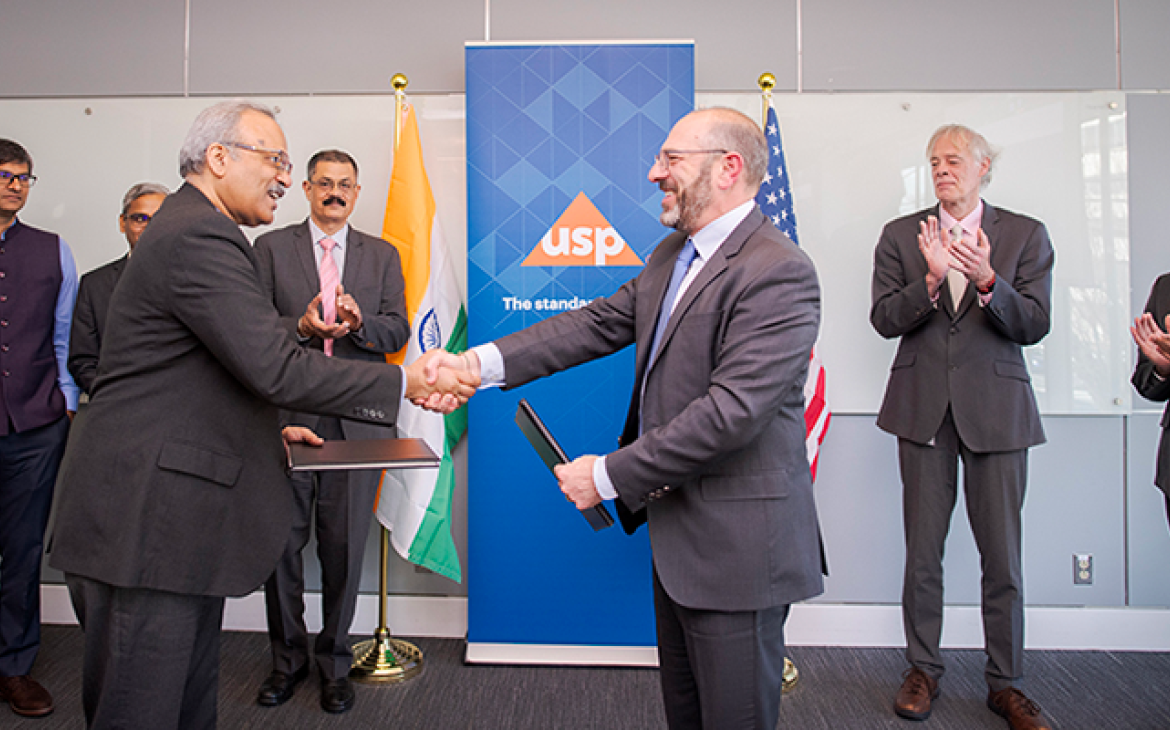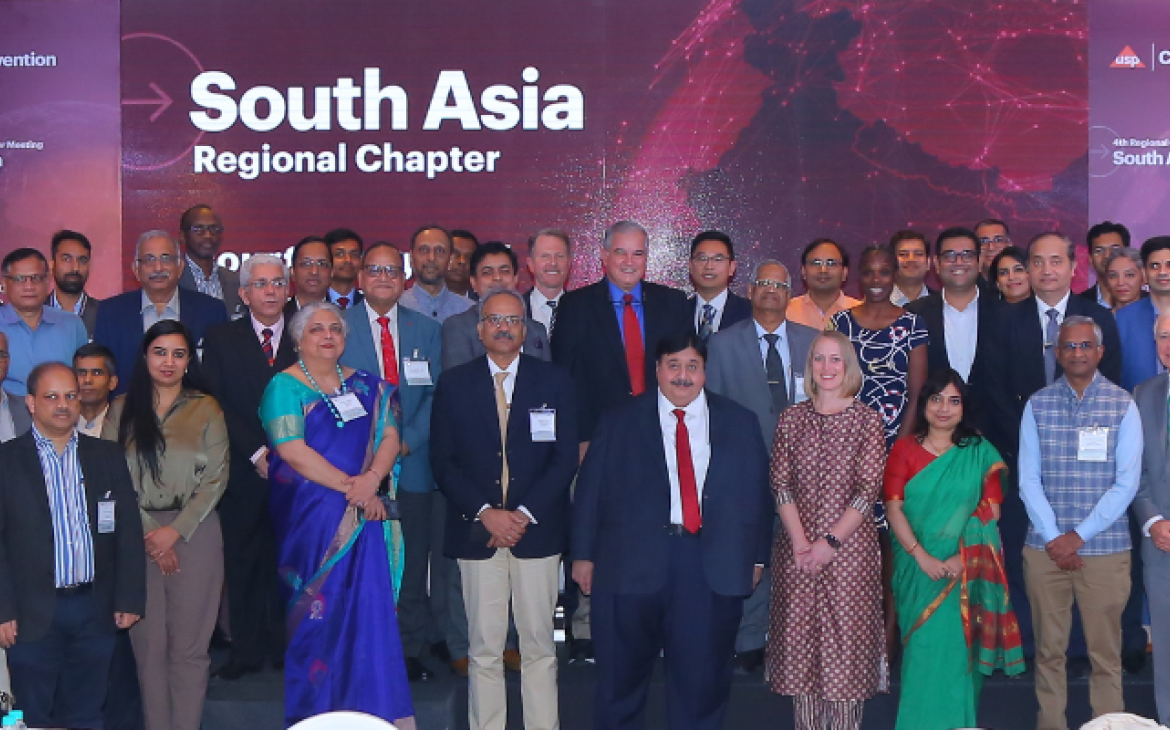 Here in the United States, we enjoy one of the safest drug and food supplies in the world. It is a huge accomplishment, the result of a vast safety net created by the coordinated efforts of multiple government agencies, health organizations, industry and non-profits.
Here in the United States, we enjoy one of the safest drug and food supplies in the world. It is a huge accomplishment, the result of a vast safety net created by the coordinated efforts of multiple government agencies, health organizations, industry and non-profits.
Regulatory agencies as diverse as the Food & Drug Administration (FDA); the Federal Trade Commission; the U.S. Department of Agriculture; and U.S. Customs and Border Protection enforce a wide array of interrelated regulatory requirements that woven together make up the vast majority of this net.
But their work is informed by science based non-profits like the National Academy of Sciences and the U.S. Pharmacopeia (USP). In addition, USP standards have been recognized by law in the Pure Food and Drugs Act of 1906 and by the Federal Food, Drug & Cosmetics Act of 1938.
When this safety net works – it can seem almost invisible. The importance of issues like quality standards for drugs and foods are most apparent when safety measures fail. Here are some examples of the importance of USP quality standards to public health and safety, in some of the many areas affected by USP standards – drugs, excipients (inactive ingredients used in drugs), food ingredients and dietary supplements.
Poor Quality Active Ingredients
The World Health Organization estimates that in less developed countries up to 25 per cent of the total medicine supply is counterfeit.
A more detailed sampling found that 30 – 60% of medicines in Africa and South East Asia are substandard. Certainly, the lack of quality medicine is a public health problem for residents of these countries – but it is also a global public health problem.
Use of substandard medicines may contribute to the growth of drug-resistant strains of malaria, tuberculosis and other “superbugs.” In the absence of an effective treatment, these diseases can spread strengthened and unchecked from country to country – including to the U.S. So, with the support of the U.S. Agency for International Development, USP is working to improve the quality of the global drug supply and strengthen international medicines regulatory capacity.
Poor Quality Inactive Ingredients
Glycerin is a solvent and sweetener used in many drugs and consumer goods, such as cough syrup and toothpaste.
Diethylene glycol is a similar, but cheaper chemical used in industrial solvents and antifreeze. Although it has a similar flavor, appearance, and fragrance – Diethylene glycol is highly toxic. In the 1930’s, more than 100 people in 15 states stretching from Virginia to California died when they took Elixir Sulfanilamide, a medicine that had been manufactured in the U.S. using a new formulation that included diethylene glycol.
At the time, food and drugs law did not require that safety studies be done on new drugs. The deadly drug and the deaths it caused led to the passage of the 1938 Food, Drug, and Cosmetic Act, which increased FDA's authority to regulate drugs and provided a role for USP in defining “adulterated” and “misbranded” drugs that has continued to this day.
But problems associated with diethylene glycol recently resurfaced. In 2007, the FDA issued a warning to U.S. manufacturers and suppliers to be “especially vigilant” in monitoring the quality and origin of shipments of glycerin. Glycerin intentionally adulterated with the cheaper, but toxic, diethylene glycol had entered the drug supply chains in a number of countries where unsuspecting manufacturers used it to make children’s cough syrup, children’s pain relief syrup and other products.
The tainted products sickened thousands and caused hundreds of deaths. Suppliers of glycerin syrup tainted with diethylene glycol were tied to deadly epidemics in China, Panama, Haiti, Bangladesh, Argentina, Nigeria, South Africa and India. To help prevent the toxic syrup from entering the U.S. drug supply, USP refined and revised its standard for glycerin to include a test to detect the deadly diethylene glycol.
Food Ingredients
In one of the largest food adulteration incidents in recent history, in 2008 tainted infant formula led to the hospitalization of over 50,000 children in China. 6 children died and over 300,000 total victims were reported. The babies became ill, because the formula they drank had been adulterated with melamine, fraudulently added to increase its apparent protein content.
Just four years earlier, 13 babies in China had died from malnutrition when the formula they drank had been diluted by manufacturers. Economically motivated adulterants can be especially hard to track, because unethical manufacturers are constantly adapting ways to bypass quality tests.
Melamine when fraudulently added to milk would most likely be done by mixing it into milk before it is processed into milk powder. This “wet-mixing” changes the chemistry of melamine in a way that can make it difficult to detect in powders.
To help manufacturers, USP has developed and is in the final stages of evaluation for its first reference standard for a contaminated product – Skim Milk Powder with Melamine produced by wet-mixing. So USP will soon have 2 reference standards for skim milk powder – one for the pure milk powder and a second for skim milk powders tainted with melamine.
Dietary Supplements
Dietary supplements are regulated differently than drugs. For one, there is no market access restriction – meaning, supplements do not have to show evidence of effectiveness, quality or purity in order to be sold in the U.S. Instead, manufacturers are expected to ensure safety, quality and identity and to have evidence to support that claim if challenged.
Dietary Supplements are not allowed to make claims to prevent, mitigate or cure diseases. However, unethical manufacturers eager to make money and meet consumer demand for “miracle pill” products, have been known to not only make illegal claims, but to intentionally adulterate products with prescription drugs or their analogs, and still sell them as “dietary supplements.”
This can result in alarming risks to public health. Not only do the hidden drugs pose risks for consumers with existing health problems, many of the drugs used to taint the products are dangerous and not approved by the FDA. Products marketed as dietary supplements for sexual enhancement, weight loss and bodybuilding tend to be the most frequently adulterated. USP is working on providing analytical methods for detection of these intentional adulterants.
USP also sets standards for dietary supplements sold in the US. But unlike the case with drugs, where USP standards must be met whether labeled “USP” or not, in the case of dietary supplements applicable USP standards are not enforceable by FDA unless the manufacturer chooses to label them “USP”. The USP Verified Mark found on some dietary supplements means that the manufacturer is participating in USP’s Verified program, and that the product has passed USP’s rigorous quality reviews for verified ingredients, potency, and good manufacturing practices in sanitary conditions.
USP – Protecting Public Health for Nearly 200 Years
In short, quality is a key component of the U.S. public health safety net. Today, the majority of our drug ingredients and the drugs themselves are made overseas, many by foreign suppliers working in different regulatory environments.
Whether drugs are made in the US or abroad, they are subject to the same FDA regulatory requirements, including applicable USP standards. As it has done for nearly 200 years - USP, with the help of volunteer experts who are leaders in medical and pharmacy practice, industry and academia, is employing the best science available to protect the American public by developing quality standards and tests to help ensure drugs, drug ingredients, dietary supplements and food ingredients sold in the U.S. can be safely consumed.
Go here to learn more about how USP promotes quality and protects public health around the world.


